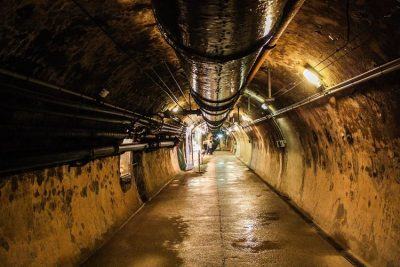Puente Nuevo: The Bridge That Spans Across a Gaping Canyon to Join the City of Ronda
Share

Puente Nuevo A in Ronda, Spain. (Steven Gerner / Flickr)
Approximately three centuries ago, King Felipe V, the king of Spain had a rather unconventional idea- deciding to build a bridge over the 120 m deep canyon in Ronda, Spain. The Puente Nuevo which translates roughly into “New Bridge” is one of the largest and most recent bridges that span over the 390 ft deep El Tajo canyon. This chasm has the Guadalevin River flowing through it and it divides the city of Ronda, which is in Southern Spain. This mighty bridge was constructed over a span of 34 years.
Why was the Puente Nuevo built?
In the 1700s, the city of Ronda in southern Spain had become extremely overpopulated. It stood on two sides of the deep El Tajo canyon, and there was nothing that allowed them to access the other side. This affected the even distribution of population, and the amenities provided by the city. It was almost although the two sides were two separate cities.
There were two smaller existing bridges, the Puente Romano and the Puente Arabe. They were, however, lower down, and did not directly link the two sides of ‘El Mercadillo’ (the old town) and ‘La Ciudad’ (the new town). The chasm ran between these two divisions. In the 1730s, plans were drawn up to build a new bridge across the El Tajo, which would directly link the two sides of the city and allow ease of movement.
Construction of the Puente Nuevo: a 40-year ordeal
The very first attempt at building a bridge at such a height was not an easy task. Even though the chasm was narrow, it was 390 ft deep.
Two architects, Jose Garcia and Jose Camacho, were chosen to work on this project and they began to work on a single arch design for the bridge in 1735. Despite the fact that they completed the bridge on time, it was not in good shape. The bridge collapsed in 1741 and killed nearly 50 people, mostly citizens of Ronda.
The work on the new bridge began again in 1759 at the same location. The designer of the Puente Nuevo was Domingo Lois de Monteagudo. The chief builder of this bridge was Juan Antonio Diaz Machuca, he invented a system of pulleys and also other heavy equipment for lifting large stones from the floor of the gorge. These stones were quarried and shaped and then brought up as per the requirements of the bridge. De Monteagudo was aware of the previous collapse and came up with a new design that would be sturdier and stronger than the first bridge.
He supervised the construction of the bridge right up to 1778, and by this time the bottom third of the bridge had been completed. However, by 1785, work on the bridge had come to a halt. Pascal Ruiz, who was the administrator of Ronda, called upon the expertise of Jose Martin de Aldehuela, one of Andalucía’s top architects, to complete the bridge. He had an extraordinary design that he used to build on the foundation laid by Lois De Monteagudo, ultimately turning the bridge into a work of art.
The bridge was constructed in three distinctive stages. During the first stage, the foundation of the bridge was built against the bedrock. The first arch that was built served as a foundation for the main arch. This main arch takes the bridge to a height of 90 m. In the final stage of construction, the two top arches and the room in the centre of about 60 square metres was constructed.

The arches of Puente Nuevo. (Keith Roper / Flickr)
Today, the room in the centre contains the interpretation museum of the bridge. It consists of an exhibition that describes the history of the bridge and its construction. The chamber can be entered through a square building that used to be the guardhouse at one time. It is believed that this chamber has served as a prison, and if rumours are to be believed, a torture chamber also.

A view of Puente Nuevo. (Max Pixel)
The Puente Nuevo was finally completed in 1793 and took a grand total of 34 years to build. Its span was approximately 216 feet and an impressive height of 322 feet. The bridge is supported by thick vertical suspensions that are attached to the canyon walls.
A major tourist attraction
The Puente Nuevo divides the city of Ronda, providing one of the best vantage points, and makes for an extremely sought after tourist spot. The bridge is popular not only for the ‘experience’ it entails but also as a great location for photoshoots. Overlooking the beautiful El Tajo gorge, the bridge provides a spectacular view of a sea of white quintessential Andalusian houses and endless fields. The bridge also acts as a marker for two very popular routes- one leading towards the bottom of the gorge, and the other taking you around the chasm so you can view it from multiple angles.
Enjoyed this article? Also, check out “Pontcysyllte Aqueduct: A High-Rise Canal-Connect Made of Cast Iron, an Engineering Marvel“.
Fact Analysis:
STSTW Media strives to deliver accurate information through careful research. However, things can go wrong. If you find the above article inaccurate or biased, please let us know at [email protected]













